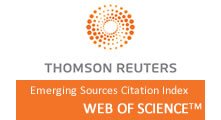The Implementation of Integrated Science Technology, Engineering and Mathematics (STEM) Instruction using Robotics in the Middle School Science Classroom
2922
2149
Abstract
The research study reported here was conducted to investigate the implementation of integrated STEM lessons within courses that have a single subject science focus. The purpose also included development of a pedagogical theory. This technology-based teaching was conceptualized by school administrators and teachers in order to provide middle school science students with a formal classroom instructional session in which science curricular were modified to include an integrated STEM activity. To this end, the authors examined and generated an account of the implementation processes including: the nature of the instruction, type of scaffolds, challenges teachers faced, the interaction among teachers, and students and teachers‘ perceptions of the integrated STEM instruction. Qualitative data were collected from interviews and classroom observations and then analyzed using grounded theory methods, specifically the constant comparative method. The results of study showed that teachers required support in the form of an expert technology teacher in order to accomplish a successful classroom implementation of integrated STEM with robotics. Additionally, it was found that teachers did not revise their existing science curriculum but rather selected integrated STEM activities that fit into the overall science course objectives and goals.
Full Text:
PDFReferences
Ntemngwa, C. & Oliver, J.S. (2018). The Implementation of Integrated Science Technology, Engineering and Mathematics (STEM) Instruction using Robotics in the Middle School Science Classroom. International Journal of Education in Mathematics, Science and Technology (IJEMST), 6(1), 12-40. DOI:10.18404/ijemst.380617
Refbacks
- There are currently no refbacks.
Copyright (c) 2018 International Journal of Education in Mathematics, Science and Technology







International Journal of Education in Mathematics, Science and Technology (IJEMST)

This work is licensed under a Creative Commons Attribution-NonCommercial-ShareAlike 4.0 International License.
ISSN: 2147-611X (Online)
